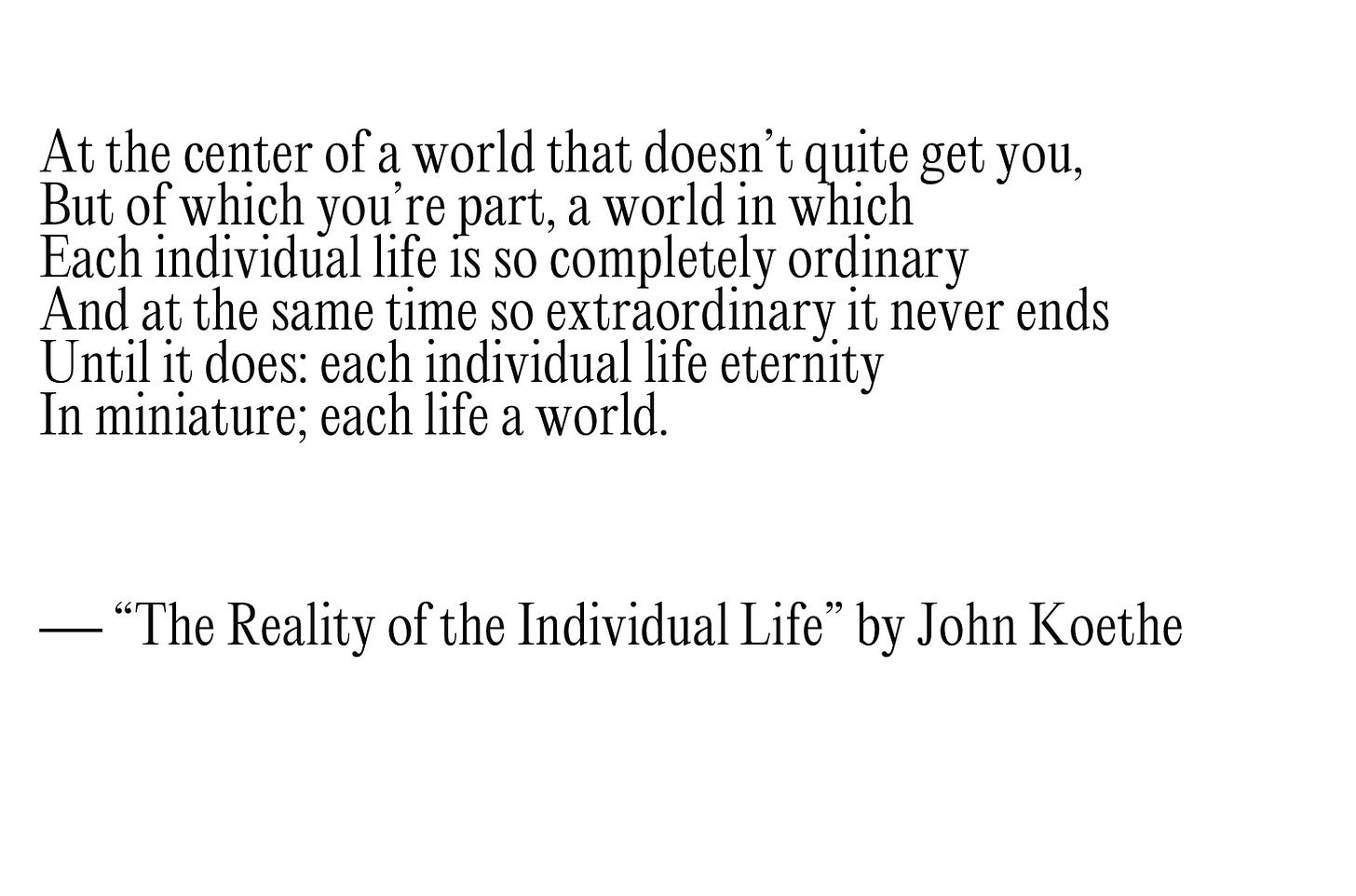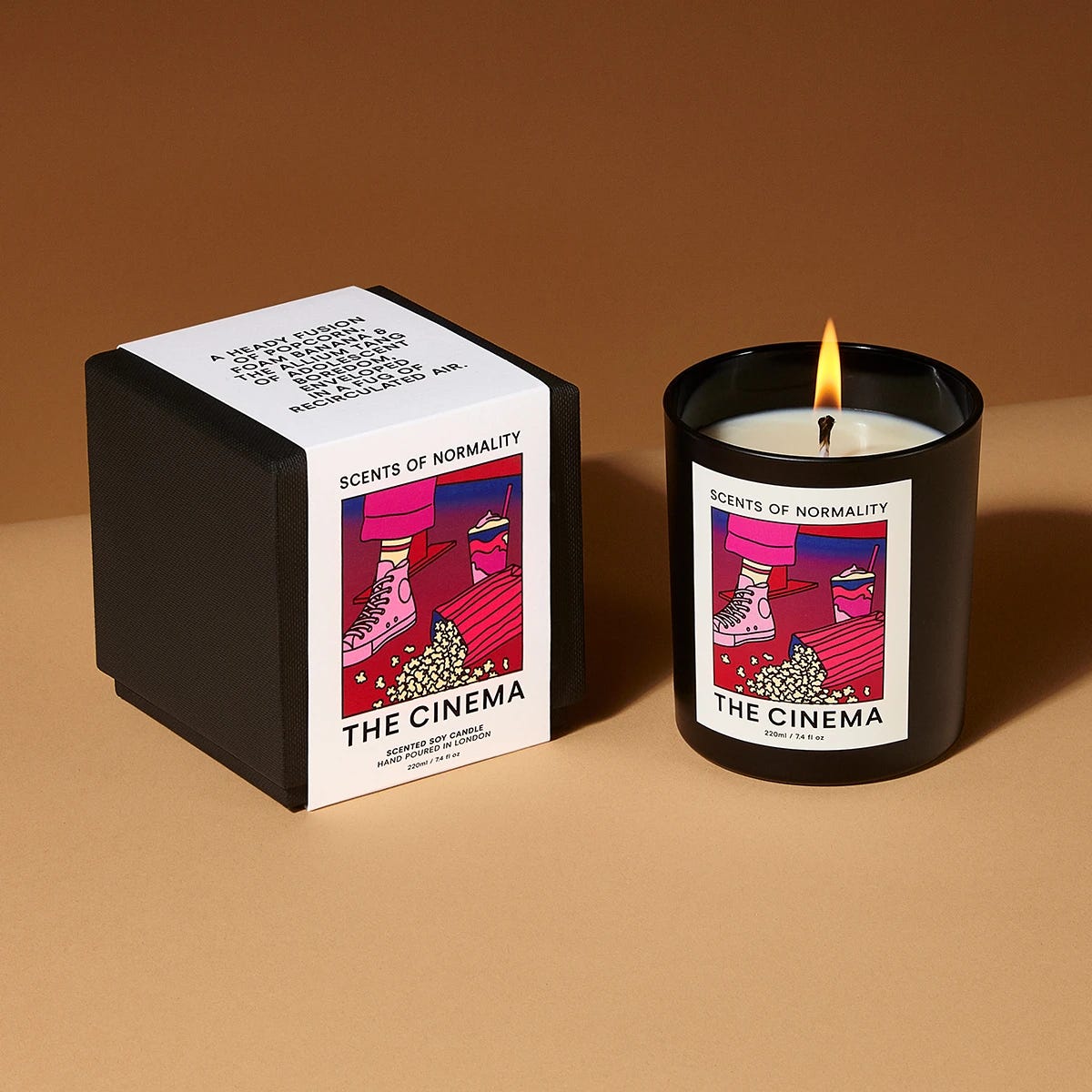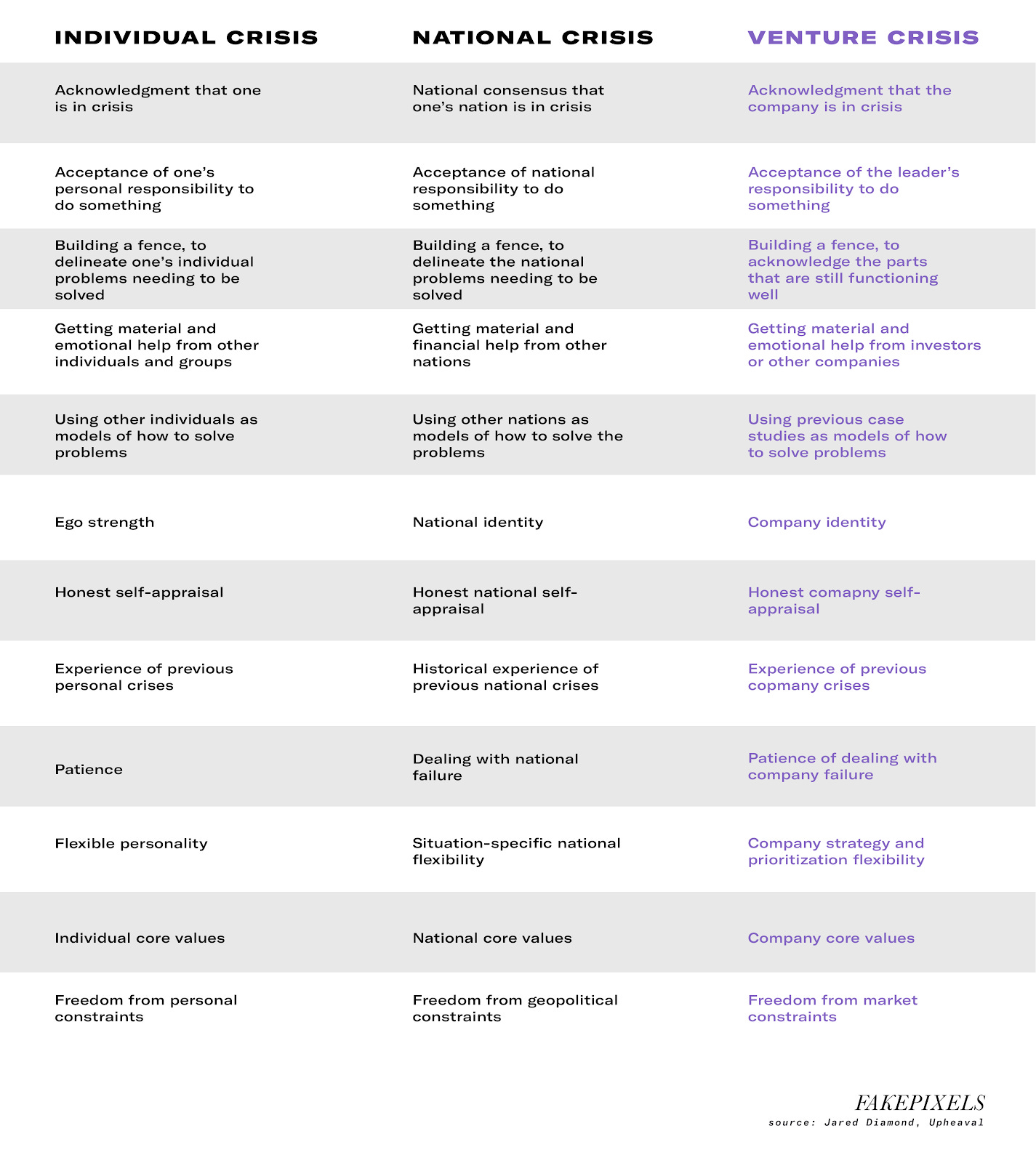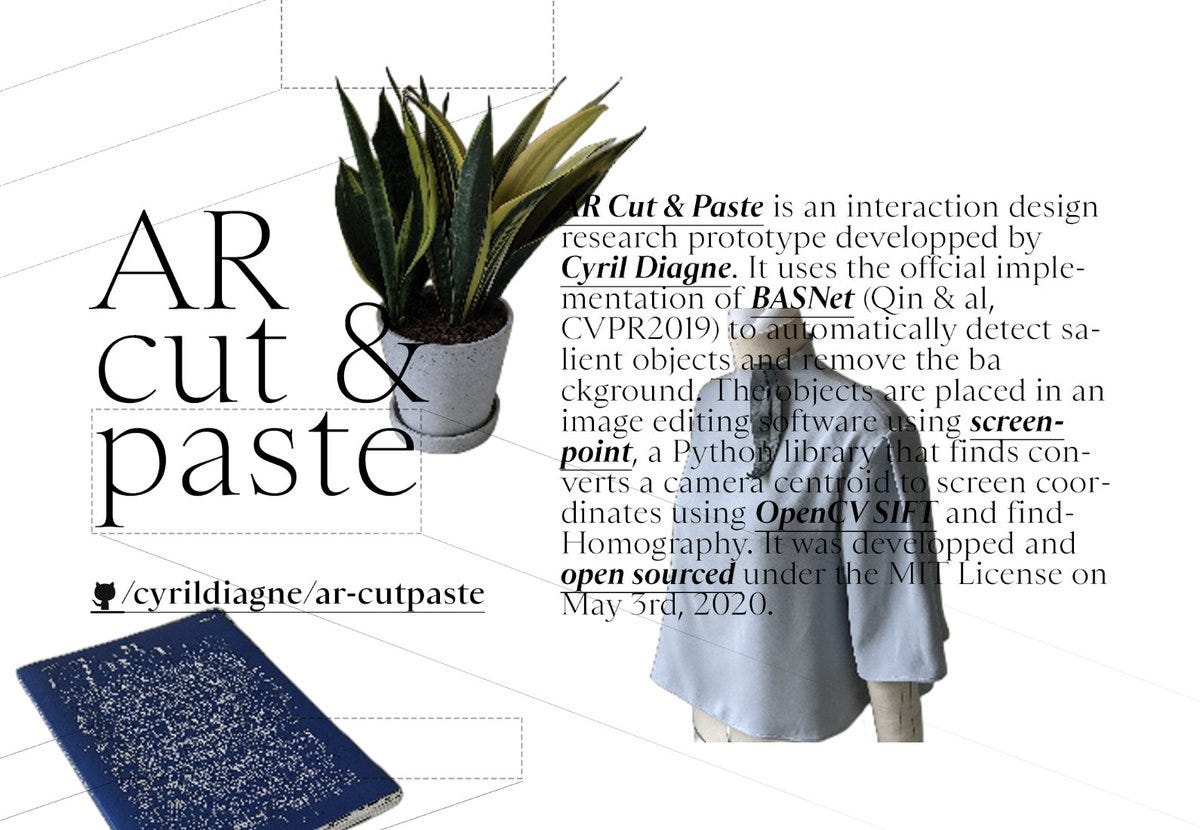[FKPXLS] VOL.42 / As we become the perfect storm
In scriptwriting, a crisis is an essential ingredient to catalyze a character’s growth or demise, and it’s exactly through moments of crisis we get to understand who the character is.



London-based candle maker Earl of East wants us to get a whiff of ‘what was’, releasing a collection called “Scents of Normality”.
“A heady fusion of salt popcorn, foam banana, and glistening hot dog, enveloped in a fug of recirculated air. A waft of cloistered contraband chicken meets the allium tang of adolescent boredom, laced with juicy notes of melting slushie syrup. An evocative blend, with just the faintest whisper of third base in the back row.”
I sure miss that.

In his latest book Upheaval, writer and historian Jared Diamond makes a juxtaposition between personal and national crises. Inspired by the work of psychotherapists, he listed the 12 factors that determine the outcomes of personal crises.

There are critiques on Diamond’s comparison over-simplistic and unsatisfactory. He emphasizes the importance of willpower as a critical factor in determining success or failure in the management of crises both by individuals and by nations. Some people have the will to do all that is necessary to overcome their crisis, while others don’t. Diamond argues that the same can be said of nations; some have what it takes to overcome a crisis, and some don’t. If the course of the national crisis can truly be impacted by will alone, then we should all become poets, which might not be a terrible thing to do.
Despite some obvious weaknesses in drawing these comparisons, I still find the framework quite useful and versatile. There are a few ways that I’ve been using this framework. The obvious one is to apply this framework to company building, the other is to recognize the gap in our current system to increase the likelihood of a good outcome.
Some of these factors seem much more attainable than the others — the acknowledgement of crisis, acceptance of responsibility, getting help from others, self-appraisal, being patient (to be honest this one is hard for me personally). What seems meaningfully harder and impalpable is the search for identity. Without a grasp of that identity, conversations around core values, the ability to be flexible, to be aware of one’s problems, and to be free and creative beyond constraints becomes almost impossible. Nations, companies, and individuals are battling with not just the pandemic, but an identity crisis. That’s the gap.
Friends and companies alike have openly admitted that pinpointing one’s own identity is the most daunting and unsolvable. So, how does one find that identity? Mainstream narratives are sophisticated at thinking in integral, viewing the identities of nations and companies as the imperfect sum of past actions and events, and oftentimes leaving important ones out.

As much as It’s tempting to believe that this shape, at a given moment in time, is static and permanent, and is truly who we are, it doesn’t take long to realize that this shape will evolve literally the next second as we are swept along by the river of time. We’re the products of our past, we are also constructing the future just by being, and as humans, we do have agency over the being part. The crisis has defined us as much as we are defining the crisis as part of the collective history moving forward. That’s the beautiful paradox in existence, and no one put it more elegantly than Borges:
“Time is the substance I am made of. Time is a river which sweeps me along, but I am the river; it is a tiger which destroys me, but I am the tiger; it is a fire which consumes me, but I am the fire.”
In scriptwriting, a crisis is an essential ingredient to catalyze a character’s growth or demise, and it’s exactly through moments of crisis we get to understand who the character is — their strengths and their shortcomings. The best outcome coming out of an identity crisis, paradoxically, isn’t to necessarily answer the question of “who we are”, but to gain clarity over the vision of “who we are becoming” — how we want to grow and evolve as a country, an organization, an individual.
One quality that we are already developing is humility. Even the most prevalent videoconferencing technology is in its nascent phase of development. It’s becoming more obvious that the past decade of exuberant celebration for disruption and innovation falls short when it is indeed becoming the primary channel of communication. The identity of a video conferencing software will have to evolve from a tool to a place, from a place to an ecosystem with the resilience that supports the complexities of humanity.
There’s something liberating and humbling knowing that we have little control over what came before us and what will come next, while also having infinite power over what we want to believe in and who we want to become — maybe that’s the sheer will that Diamond was describing, the potential to turn a crisis into a perfect storm.
Keep building, keep swimming,
Tina

The mass migration to networked screens is feeding a concurrent intensified hunger for physical assembly and human contact, for more multisensory experiences than those that can be served by flat screens.
Constraints inspire creative ways to introduce multi-sensory experiences.

Distance disco built an online dance game with a fully encrypted, open-source video conferencing tool Jitsi. As video conferencing infrastructure become more commoditized with increasing solutions such as Agora and Daily.co, interactive layers that promote specific use cases proliferate.


AR Copy Paste App allows you to copy an artifact in the real world and paste it directly to a digital interface. This tool facilitates the migration of artifacts of the physical world to the digital realm, and true creativity lies in how to then use these digital artifacts to create a meaningful digital experience.


Steven Sinofsky shared a treasure, a moment in history when iPad first launched:
“The first looks and reviews a bit later were just endless (and now tiresome) commentary on how the iPad was really for “consumption” and not productivity. There were no files. No keyboard. No mouse. No overlapping windows. Can’t write code!”
The Midwestern lifestyle has really inspired the existential inquiry that makes me, for the very first time in my life, understand Thoreau, the Walden Thoreau. The kind of guy who wrote:
“Every generation laughs at the old fashions, but follows religiously the new.”
I’ve been having similar conversations with friends speculating what the future of X would look like. Regardless of how futuristic the ideas sound, I start to find them to return closer and closer to the very intrinsic qualities of what makes us human — to take care for our children and for each other, to nourish our bodies, to make our home sanctuaries, to gossip with neighbors, to share knowledge and laughs, to be surprised, and be in awe.

Source: McKinsey Consumer Pulse Survey, n=1993
I start to believe that the most visionary product is at the same time the purest tribute to our past, to the lessons we’ve learned in history. With physical constraints, we are again digging into the archives of human accomplishments to humbly learn that so much has been figured out, and so much has remained unknown to us.
It’s unclear how that looks like as we are treading the river, but the next platform that resonates with the sentiment of our time will respect us and understand that we are deeply flawed, amorphous, and unpredictable. The next platforms will be less inspirational, but more empathetic, and they need to be as resilient as we become walking out of this crisis.

This is one of my favorite snippets from journalist David Carr’s collection “Final Draft”:

He wrote:
“Stick in any nouns you want: “the Constitution,” “Brussels sprouts,” “swing music,” or “the 105th Congress,” and you, too, can write a lead piece for Outlook […] It’s just that kind of discourse that makes Greta Van Susteren seem like one of the more important public intellectuals of our time.”
We can plug in some “COVID” reference here.


The quote alone lasted me all week.


A temple on Crescent Lake at Mingsha Shan (Echoing Sand Mountain) near the town of Dunhuang in Gansu, China. Dunhuang was an important strategic base along the ancient Silk Road | Photography: Zhang Xiao
In his book “By Steppe, Desert, and Ocean: The Birth of Eurasia”, the archaeologist Barry Cunliffe described how medieval Central Asia was a region “like no other in the world.”
Here, the cultures of China, Persia, and India mingled with one another — nomadic raids and invading armies brought down kingdoms while the Buddhist monasteries provided a measure of stability amid the turbulence.
The boundaries existed not just between peoples and geography but between order and chaos.

Fakepixels is a space for courageous thoughts.
We respect ideas, even dangerous ones. We believe in the power of deep thinking, nuanced dialogue, and creative courage.
We are a community with curious thinkers and restless builders who believe the future will be better than the status quo.
Sounds like you? Join the club and bring a friend.

Tina is a designer, writer, and investor who’s online 24/7 hunting for ideas and ventures built with grit and purpose. Born in China. Based in NYC. You can find her elsewhere on Twitter, Instagram, or a corner café.



